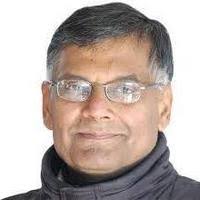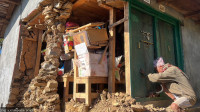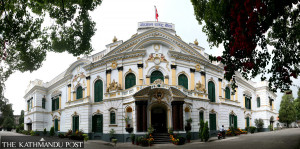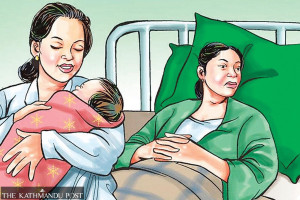Columns
Encountering a generation adrift
The change of guards in the capital holds little, if any, meaning outside Kathmandu.
CK Lal
Masurpatti is a village at the edge of the map—and of the national discourse, both literally and figuratively. No one in the hamlet seems to remember how Musaharpatti—named after a land grant (patta) given to a Musahar who had helped the Gorkhalis in their war with the East India Company—became Masurpatti over time. Today, no descendant of the Musahar loyal to the Gorkhalis can be traced anywhere in the vicinity, nor can any Musahar family be found in the village to which they once held the title deed.
It was a settlement twinned with the larger Suga Bhavanipaati to the north in a single administrative unit; now, both villages are parts of the extended Jaleshwar Municipality. Surprisingly, the badly designed and poorly written website of the municipality still describes itself as “situated at Central Development Region, Zanakpur Zone” with no mention whatsoever of the Madhesh Province.
About 3 kilometres south-east of the district headquarters, the village is connected by an almost all-weather road. Yes, almost—because no road is truly all-weather during the monsoons. The settlement abuts the international border with India. Along a pucca road just across the border lies Chakani Bazaar, where villagers go to shop for most of their daily needs.
Urban travellers who never tire of complaining about road closures outside the capital during the rainy season—or about the condition of the surface for much of the year—ignore the fact that over the last three decades, the transportation network has expanded far beyond the government’s institutional capacity and financial means of maintaining it. More roads—over 36,000 kilometres in 2025 compared to about 8,000 in 1990—have been built in the past 35 years than during the two centuries of Shah-Rana rule.
In addition to farming, herding goats and keeping buffaloes remain the mainstay of the local economy. A few poultry farms and fishponds have emerged as supplementary activities. But it’s the remittances that seem to have energised cash transactions, with one easily noticeable outcome: a temple complex and a mosque are now the two most impressive structures in the village. A significant rise and change in consumption patterns have also created a problem common to most villages in Madhesh—nobody seems to know what to do with the mounting solid waste and the plastic bags that flutter where butterflies used to fly.
Frightening ennui
Just outside the village is a crossroads with a signpost pointing in four directions, bearing the names of surrounding villages—Suga, Pataili, Bishanpur and Masurpatti. A teashop stands next to the junction, fashioning itself as a restaurant. On a lazy afternoon, several motorcycles parked along the road suggest that the outlet deals in beverages stronger than tea or coffee, though it can’t claim so publicly because of licensing restrictions.
When Nitish Kumar implemented a total alcohol ban in Bihar in 2016, almost every teashop in the border villages of Madhesh began to sell or serve liquor of all kinds. When “conflict resolution” was a flourishing industry between 2006 and 2014, every youth who bought a motorcycle in Madhesh was teasingly taunted if it was a “Chemonics bike”—named after the USAID/OTI contractor, the implementing partner in officialese, that had engaged many young interlocutors. With the influence of Maoists and Madheshis brought down to manageable limits after the elections of 2014, the programme swiftly ceased operations. These days, when an otherwise unemployed youth buys a bike, he is sometimes asked to thank Nitish Kumar!
After the brutal suppression of the Madhesh Uprising in 2015—more than 48 shot dead and over a thousand injured—the youth exodus to West Asia and Malaysia increased dramatically. With the introduction of federalism and the empowerment of local government, a window of opportunity appeared to open for hard-headed youths. Pahadi-dominated parties needed them to counter Madhesh-dependent outfits on their home ground. Small contracts at the local level weren’t lucrative enough for big contractors from Kathmandu to come down to the plains, and the boys who stayed back could now afford to buy motorcycles from their own earnings. The post-2015 regime of brokers—dalaltantra in colloquial terms—has created a stronger political base in the mofussil than the opinionators in the capital can imagine.
A couple of boys—probably in their late 20s or early 30s—seemed to be waiting for something at the self-styled restaurant as they scrolled through their mobile phones. A few casual enquiries, such as whether they were locals, elicited cryptic replies. The culture of conversation at the teashop seems to have disappeared. The boys apparently knew each other but weren’t talking—not even to one another.
It was much the same among the youths, apparently in their late teens, loitering by the banks of a nearby pond. A pervasive listlessness has settled among rural youth, dulling the energy that once fuelled migration and protest alike. Unlike the so-called Gen Z insurrectionists of Kathmandu—who brought down a government and burnt all their symbolic seats of power to ashes within 36 hours—their rural cohort in Madhesh seems caught in a mood of ambient indolence, with neither hope nor rebellion. The ennui that hangs over the young is frightening—it could lead either to long stagnation or massive upheaval.
Residual anomie
Contrary to the Gen Z expression widely in circulation in Kathmandu, this urbanised cohort—defined by its age and experience—might be better described as the TikTok generation. The Zoomers (born 1997–2012) take their name from Boomers (born 1946–1964), who were idealistic, optimistic, resourceful and innovative. Their Nepali counterparts formed a Lost Generation (born 1951–1960) of populistic and pessimistic ethnonationalists, including Khadga Prasad Sharma Oli, Madhav Kumar Nepal, Jhala Nath Khanal, Pushpa Kamal Dahal and Baburam Bhattarai. By that hallmark, “Gen T”—for either technocratic or TikTok—fits the Nepali version of Gen Z much better.
Restless and over-stimulated, the TikTokers think in the fast-moving images of Instagram, Reels and TikTok, and discuss ideas in chatrooms such as Discord rather than face to face even for something as important as choosing an interim prime minister. The spectacular success of September 8–9, 2025, was built on the foundation of several experiments in scripted spontaneity of the recent past.
The White Shirt campaigns—such as the anti-Maoist Peace Rally in 2010, or the Facebook protest against the extension of the Constituent Assembly’s term in 2011, famously summed up as “You have taken your wages in full; now give us the constitution”—created conditions for an extra-constitutional government and carefully managed elections. These movements finally paved the way for the resurgence of pre-republican politicians like Khadga Prasad Sharma Oli and his henchman Bamdev Gautam in the Sushil Koirala cabinet, which ruthlessly suppressed the Third Madhesh Uprising in 2015. Since then, the ethnonational establishment has consistently refused to listen, even to the full implementation of the divisive constitution, let alone its promise of progressive amendments.
If successive successes breed a resulting exuberance, the wounds of failure leave behind a lingering anomie. The equivalent of Gen T appears to have become Gen A, as in uppercase apathy, in Madhesh. The change of guards in the capital holds little, if any, meaning outside Kathmandu.




 8.12°C Kathmandu
8.12°C Kathmandu















